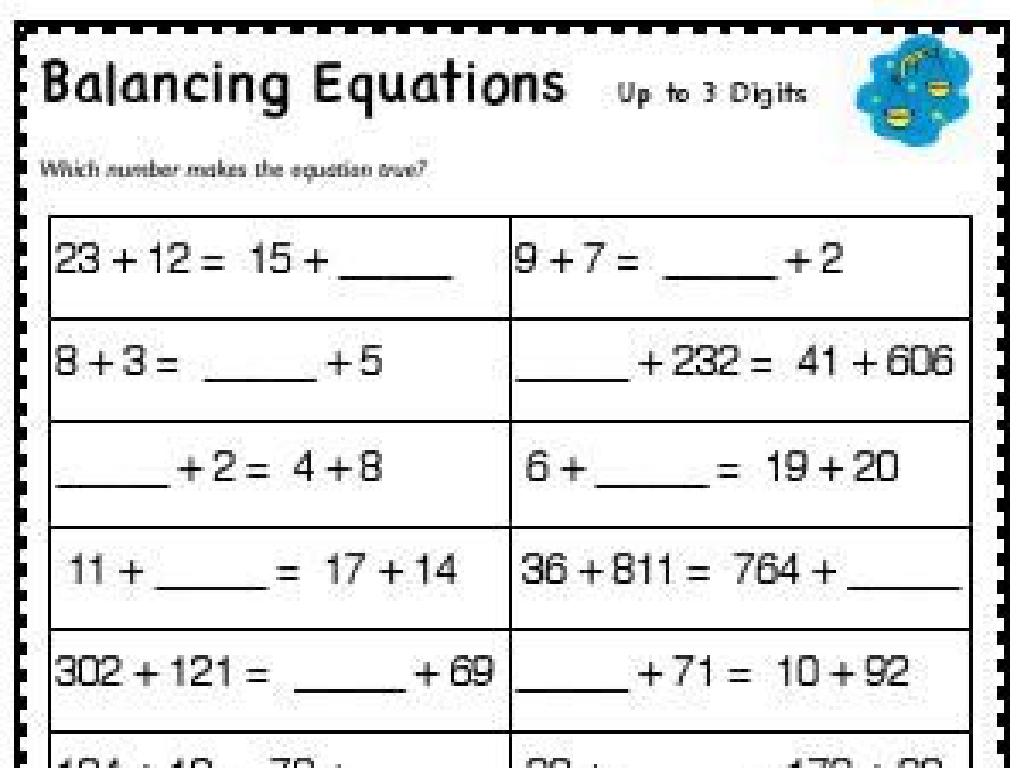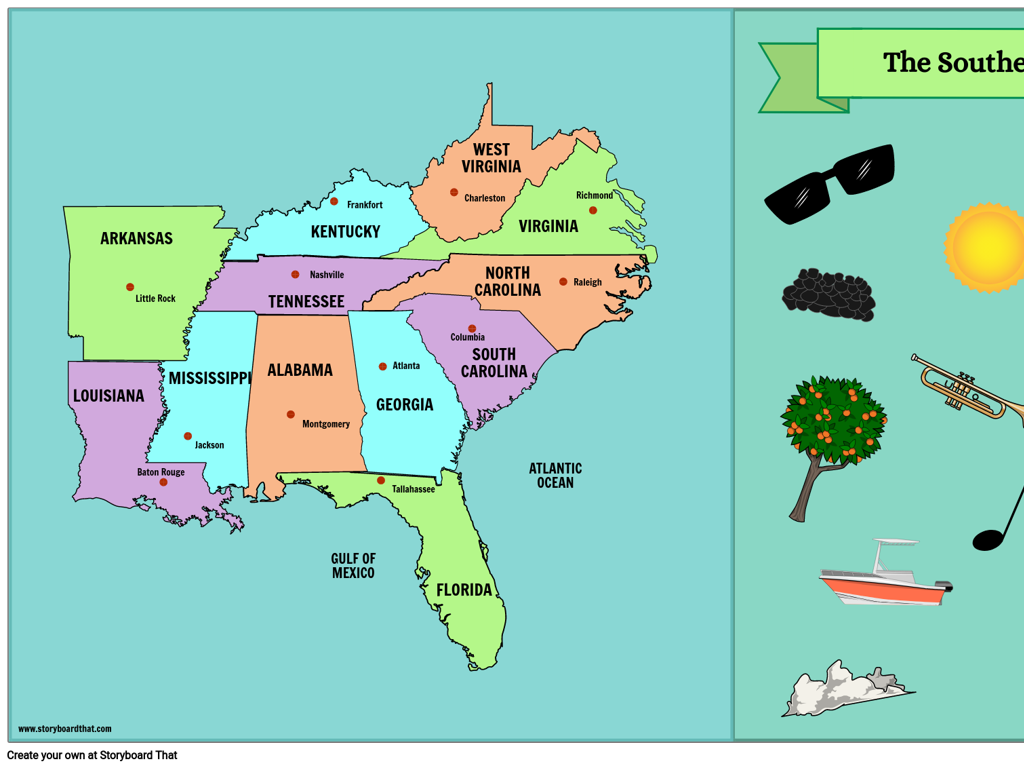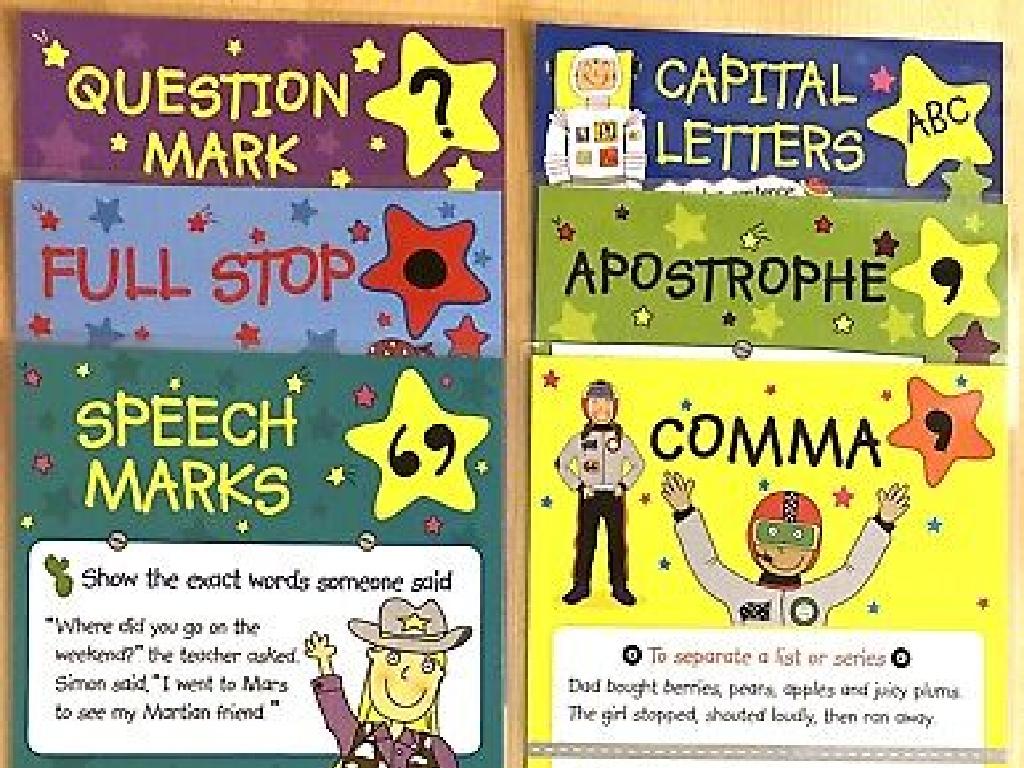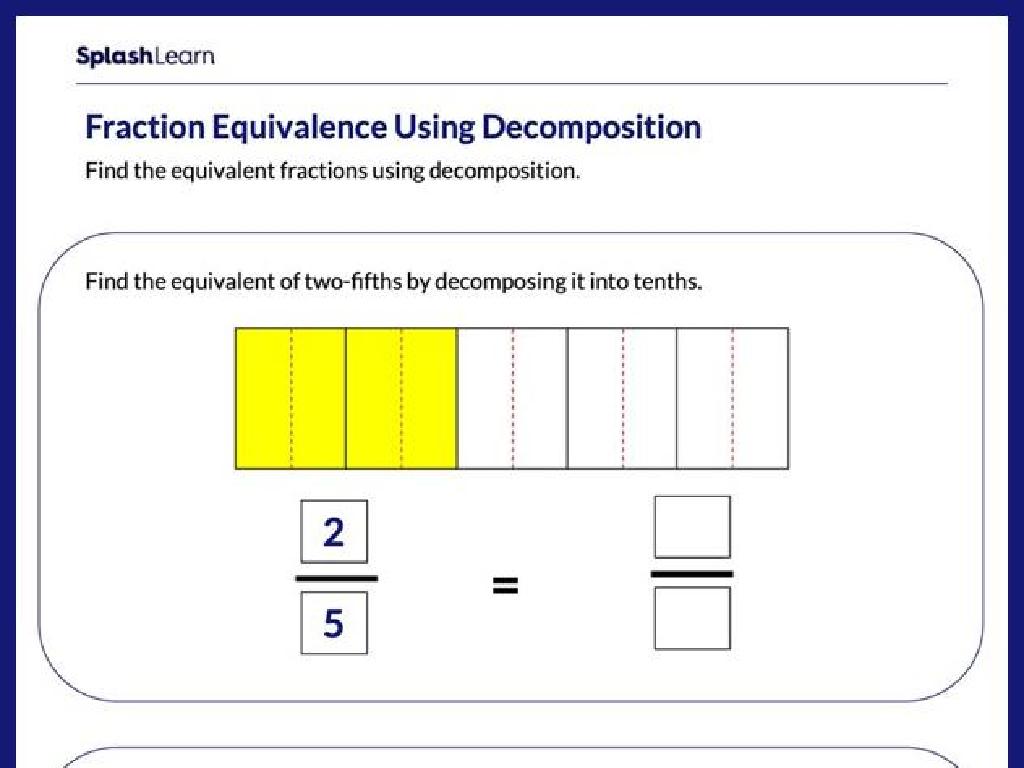Which Number Is Smallest?
Subject: Math
Grade: Pre-k
Topic: Compare Numbers
Please LOG IN to download the presentation. Access is available to registered users only.
View More Content
Big and Small Numbers
– Welcome to fun with numbers!
– Understanding big vs. small
– Big numbers are like elephants; small numbers are like mice
– Numbers have sizes too
– Just like toys, some numbers are bigger or smaller
– Let’s find the smallest number
– We’ll use toys to see which number is less
|
This slide is designed to introduce Pre-K students to the concept of comparing sizes through the context of numbers. Start the class with a warm welcome and explain that numbers, like objects, can be big or small. Use relatable comparisons, such as big things being like elephants and small things like mice, to make the concept more tangible. Engage the students by asking them to think of their own examples of big and small things. Then, transition to explaining that numbers also have sizes and we can see which ones are smaller or bigger. Use visual aids like number cards or toys to help them understand the concept of ‘smaller than’ in a playful and interactive way. The goal is to make the students comfortable with identifying which numbers are smaller in a set.
Exploring Numbers: Which Is Smallest?
– Numbers help us count
– They show quantity
– Counting from 1 to 10
– Let’s practice counting together!
– Finding the smallest number
– Which number is the smallest when we count?
|
This slide introduces the concept of numbers to Pre-K students, emphasizing their role in counting and understanding quantity. Start by explaining that numbers are symbols we use to tell us how many of something we have. Engage the students by counting aloud from 1 to 10 as a class, helping them to recognize the sequence of numbers. After counting, ask the students to identify the smallest number they heard. This activity will help them begin to compare numbers and understand the concept of ‘smallest’. Encourage participation and praise efforts to build confidence in their number recognition skills.
Big and Small Numbers
– Numbers have sizes too!
– Comparing 1 and 10
– Is 1 smaller or bigger than 10?
– Using a number line
– A line with numbers shows order
– Finding the smallest number
– We look for the number closer to 0
|
This slide introduces the concept of magnitude in numbers to Pre-K students by comparing sizes, something they can visually understand. Start by explaining that numbers can be big or small, just like objects they are familiar with, such as animals. Use the example of an elephant (big) and a mouse (small) to illustrate the concept. Ask the children which number they think is smaller, 1 or 10, and why. Then, introduce a number line as a tool to help see the order of numbers and find which is smaller by looking for the number that is closer to the start of the line, which is 0. This visual representation helps them grasp the concept of number magnitude intuitively.
Which Number is Smallest?
– Understanding smallest number
– Counting: Which comes first?
– The first number in counting order is the smallest.
– Comparing 3 and 5
– Is 3 or 5 first when we count?
– Finding the smallest
– We use counting to see that 3 comes before 5.
|
This slide is aimed at helping Pre-K students understand the concept of comparing numbers to find the smallest one. Start by explaining that the smallest number is the one that comes first in the counting order. Ask the children if they remember which number comes first when they count. Use this to lead into the activity of comparing the numbers 3 and 5. Guide the students to count from 1 upwards to see which of the two numbers they would say first, helping them to conclude that 3 is smaller than 5. Reinforce the concept by using visual aids like number lines or counting objects if possible. Encourage the students to practice with different numbers to solidify their understanding.
Playing with Numbers: Finding the Smallest
– Let’s play a game with numbers
– I’ll show you two numbers
– For example, is 2 or 5 smaller?
– You tell me which is smaller
– Think, is 1 smaller than 3?
– Are you ready to play?
|
This slide is designed to introduce Pre-K students to the concept of comparing numbers in a fun and interactive way. The game format encourages participation and makes learning about numbers enjoyable. As you show the students two numbers, ask them to identify the smaller one. Use visual aids like number cards or objects to help them understand the concept of quantity and size. Encourage them to explain their thinking process. This activity will help them grasp the basic concept of number comparison, which is foundational for future math skills. Be prepared with several examples and be ready to offer guidance and praise as they learn.
Class Activity: Number Hunt
– Let’s play the Number Hunt game!
– Find objects with numbers in class
– Show and tell the smallest number
– Is 2 smaller than 5? Show us!
– Have fun comparing numbers!
|
This interactive activity is designed to help Pre-K students understand the concept of comparing numbers by finding the smallest one. Encourage the children to search for objects around the classroom that have numbers on them, such as blocks, books, or labeled containers. Once they find an object, they should present it to the class and explain which number is the smallest among the ones they found. Provide guidance and ensure that each child participates. Possible variations of the activity could include pairing up students, using number flashcards, or setting up stations with different numbered items. The goal is to make learning about numbers a fun and engaging experience.
Celebrating Our Number Stars!
– Fantastic work with small numbers!
– Smallest number: first in counting
– Like 1 is smaller than 2, 3, 4…
– You’re all number stars!
– Keep practicing at home!
– Try counting toys or crayons!
|
This slide is a positive reinforcement for the students, acknowledging their efforts in learning how to identify the smallest number. It’s important to remind them that the smallest number is the one that starts the counting sequence. Encourage them to feel proud of their progress as ‘number stars’ and motivate them to continue practicing with everyday items at home, reinforcing the concept in a fun and engaging way. This will help solidify their understanding of numerical order and comparison.






